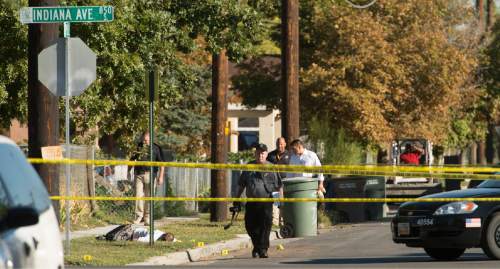This is an archived article that was published on sltrib.com in 2014, and information in the article may be outdated. It is provided only for personal research purposes and may not be reprinted.
Although Utah's crime rate is still among the lowest in the country, new FBI data shows violent crime is steadily rising in the state.
Nearly 6,500 violent crimes were committed in Utah last year, according to crime statistics released Monday. The rate per 100,000 residents was up about 9 percent from 2012 and up 14 percent from 2011.
Authorities said heroin addiction is fueling a rise in violent crime in northern Utah, especially in robberies.
"What used to be almost nonexistent in Salt Lake City early in my career is now the drug of choice," said police chief Chris Burbank during a violent crimes conference in September, according to a video recording of a press conference.
Bank robberies shot up almost 200 percent this year, said FBI special agent Adam Quirk, and there were more armed hold-ups of banks and stores in the Salt Lake valley than in Denver in early 2014.
"It goes to show the trend here is significant and it continues to increase," said Quirk in September.
Utah's violent crime rate, though, was still the eighth-lowest in the country last year, behind Vermont, Maine, Virginia, Wyoming, Kentucky, New Hampshire and Idaho. The year before, the state had the sixth-lowest rate.
There were 49 murders in Utah in 2013, down by just one from the total each of the previous two years.
Utah is somewhat unusual in that most of the state's gun crime is related to domestic violence, said Rob Butters, director of the Utah Criminal Justice Center.
The FBI's violent crime metric includes four crimes: murder, rape, robbery, and aggravated assault. Nationally, violent crime dropped by about 4 percent.
The report also marks the first year that the FBI collected data under a new, more inclusive definition of rape. The new definition includes cases where the victim is incapable of giving consent due to age or the influence of drugs or alcohol as well as other forms of sexual penetration. It also includes male victims.
Under that new definition, the rate of rapes in Utah increased 44 percent.
Rape Recovery Center Director Holly Mullen said Tuesday that the new classification will help identify more victims and catch more perpetrators.
"It really speaks to the full spectrum of sexual violence and actually the way that we need to start thinking about rape," she said.
— Associated Press writer Brady McCombs contributed to this report.



